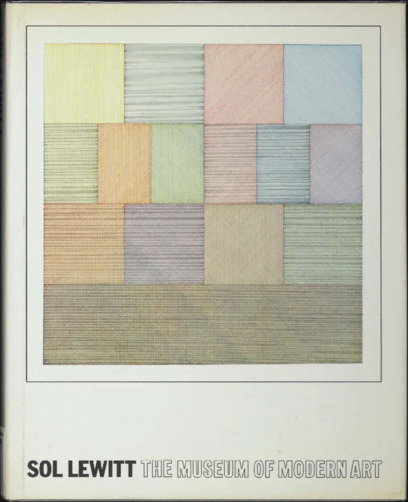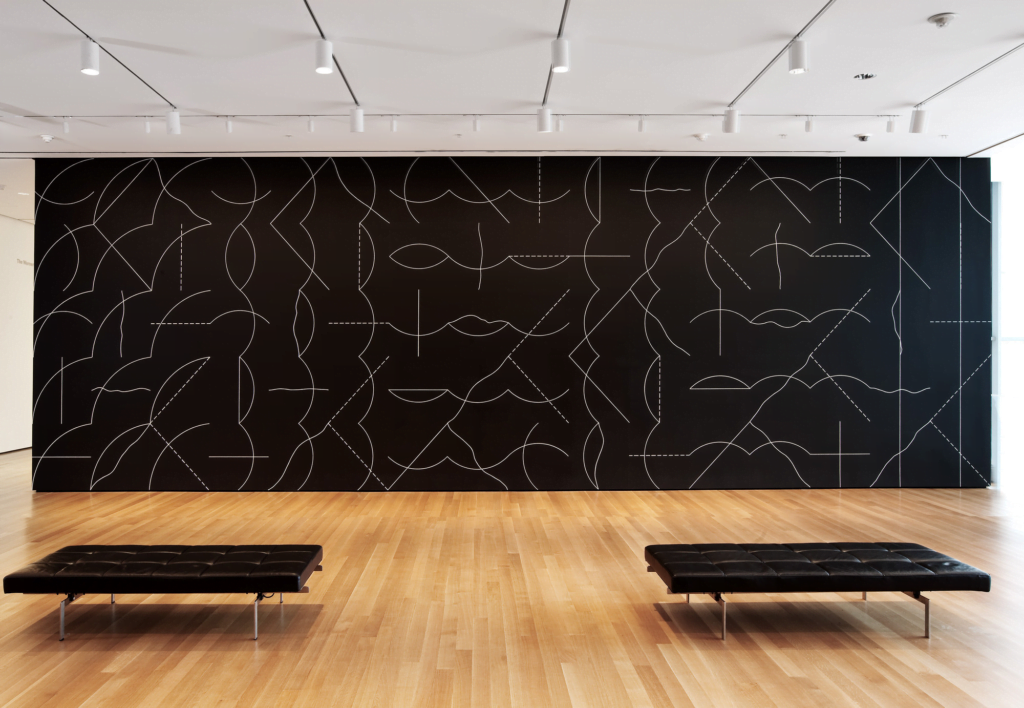Memoriesforart » Artists » Sol LeWitt
More Facts
Name: Sol
Surname: LeWitt
Lives & Works: Hartford
Lives in State: Connecticut
Nationality: United States of America
Date of Birth: 1928
Date of Death: 2008
Period: Post-War
Movement: Conceptual Art, Contemporary art, Minimalism, Modern art
Table of Contents
You may have seen his art without realizing it. Sol LeWitt’s minimalist conceptual creations grace museum walls and public spaces around the world. As one of the pioneers of conceptual art in the 1960s, LeWitt challenged what art could be. His sparse geometric forms and serial structures explore ideas and systems rather than expressive brushstrokes.
LeWitt’s prolific 50-year career reshaped art with his radical proposition that “the idea becomes a machine that makes the art.” This thorough biography provides insight into the life and work of the artist who changed how we think about art and authorship.
From his humble beginnings in Hartford, Connecticut to his years in New York City at the center of the contemporary art world, you will gain an understanding of how LeWitt’s restrained and cerebral artworks came to define an era.
Though he has passed, his creative spirit lives on in the institutions he helped build and the artists he influenced. LeWitt’s life serves as an example of what can be achieved by staying true to one’s principles and never ceasing to push the boundaries of creative expression.

Sol LeWitt was born in Hartford, Connecticut in 1928. His family moved to New Britain, Connecticut shortly after his birth, where LeWitt grew up.
LeWitt’s interest in art began at a young age. He attended art classes at the Wadsworth Atheneum Museum of Art in Hartford as a child. He later received his Bachelor of Fine Arts degree from Syracuse University in 1949.
After serving in the Korean War, LeWitt moved to New York City in 1953 to pursue a career as an artist. He worked odd jobs to support himself while creating art in his spare time. During this period, LeWitt’s work incorporated abstract expressionism and gestural brushstrokes.
He use lines, color, and geometric forms for drawings. These wall drawings began as a set of written instructions that were then executed by others at the installation site.
LeWitt’s radical approach to art inspired fellow minimalists and conceptual artists. His work is featured in major museum collections around the world, including the Museum of Modern Art and the Tate Modern. LeWitt continued creating art until just before he died in 2007 at the age of 78.
Through his wall drawings and other works, LeWitt challenged traditional notions of art and authorship. He cemented his place as a pioneer of minimalism and conceptual art, movements that still influence artists today. LeWitt’s life and career have secured his status as a pivotal figure in 20th-century art.

In the 1960s, LeWitt’s style evolved into minimalism and conceptual art he became known for his art focused on the idea behind the work rather than the finished product. LeWitt is most famous for his wall drawings.

The emergence of Conceptual Art in the 1960s represented a shift away from the traditional artistic practices of painting and sculpture. Sol LeWitt was a pioneer of this movement that emphasized ideas over the visual components of art.
LeWitt believed that the concept or idea behind an artwork was more important than the finished product. His art focused on the intellectual process involved in creating art rather than on the physical work itself.
LeWitt articulated his theory of Conceptual Art in his 1967 essay “Paragraphs on Conceptual Art.” In it, he wrote that “the idea becomes a machine that makes the art.” For LeWitt, the execution of the work was simply a mechanical process to convey the underlying concept.
LeWitt’s sculptures and wall drawings explore seriality, permutation, and systems of logic. His works start with a simple rule or diagram that is then executed in a predetermined fashion without the artist’s subsequent interference.
LeWitt saw the role of the artist not as a creator of a final product but rather as a conceiver of the idea or system behind the work. The physical labor required to construct the works was carried out by assistants following LeWitt’s written instructions.
LeWitt’s conceptual approach has been enormously influential. His radical idea that the concept behind an artwork could be more significant than its physical manifestation opened the door for new experimental art forms.
LeWitt demonstrated how a simple idea, when implemented in a consistent logical manner, could be a work of art in itself. His conceptual and minimalist works laid the groundwork for subsequent movements like process art, postminimalism, and institutional critique.

Some of LeWitt’s most famous works include:
|
1987 |
Complex Forms |
A colorful series of irregular polyhedrons at the National Gallery of Art Sculpture Garden in Washington, D.C. |
|
1971 |
Wall Drawing #46 |
Hundreds of arcs in four directions on a wall at the Museum of Modern Art in New York. |
|
1974 |
Variations of Incomplete Open Cubes |
A series of aluminum lattice cube structures at the Wadsworth Atheneum Museum of Art in Hartford, Connecticut. |
Through his pioneering conceptual art, Sol LeWitt explored seriality, permutation, and logical progression in a groundbreaking way. His radical and inventive structures and wall drawings have inspired generations of artists. LeWitt’s systematic and open-ended works laid the foundation for conceptual and minimalist art as we know it today. His extensive body of work ensures his status as a seminal figure in 20th-century art.
Sol LeWitt’s impact on conceptual art cannot be overstated. Through his prolific career spanning five decades, LeWitt explored seriality, systems, and logic in art. His works have been featured in major museums around the world, cementing his status as a pioneer of minimalism and conceptualism.
LeWitt is best known for his “structures” – sculptures based on serial progression and systematic variation. His open-form structures invite viewers to walk around and through the work, exploring the relationships between the parts and the whole.
LeWitt’s modular cubes, first created in the 1960s, have become iconic examples of minimalist sculpture. The artist’s wall drawings also demonstrate his interest in logic and systems. The wall drawings consist of instructions for arrangements of lines and forms that can be executed by anyone. This challenges the idea of art as a unique object made solely by the artist.